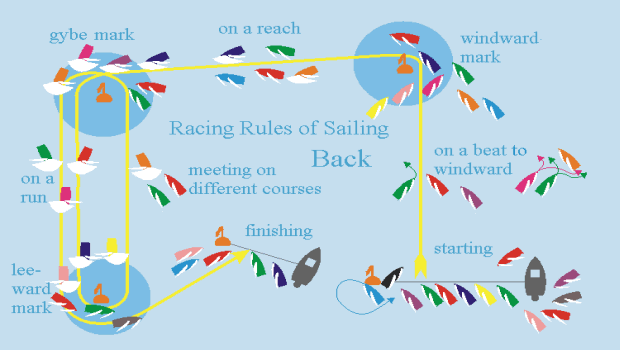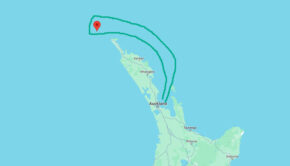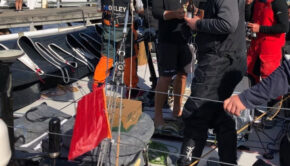Why we need to keep Rule 16.2 in the Racing Rules of Sailing
Published on April 28th, 2014
by Rob Overton, Chairman of the US Racing Rules Committee
Lately, there’s been some talk about removing rule 16.2 in team racing, and some people say, “If it’s a good idea to remove this rule from team racing, and it’s already more or less deleted for match racing, why have it for fleet racing?”
I think there are several good reasons for keeping rule 16.2 in the rulebook.
Before we get into those reasons, let’s see what we’re talking about. Rule 16 reads, in its entirety:
16 CHANGING COURSE
16.1 When a right-of-way boat changes course, she shall give the other boat room to keep clear.
16.2 In addition, when after the starting signal a port-tack boat is keeping clear by sailing to pass astern of a starboard-tack boat, the starboard-tack boat shall not change course if as a result the port-tack boat would immediately need to change course to continue keeping clear.
Rule 16.1 is very straightforward. It protects keep-clear boats from attacks from which they cannot escape. By comparison, rule 16.2 is a bit complicated. It addresses one situation only: a port-tack boat is trying to pass behind a starboard-tack boat, and, loosely put, the rule prohibits dial-downs (or when sailing down wind, dial-ups) when the boats are close. Dial-downs are aggressive maneuvers, and close dial-downs are, essentially, vicious attacks. In match racing, where viciousness is a virtue, that’s OK. Arguably the same goes for team racing, which is becoming more and more like match racing. But I think most sailors would agree that vicious attacks have no place in fleet racing, which is all about getting around the race course fast and safely, and having fun doing it.
Thus the primary reason for keeping rule 16.2 is that it preserves a game we like. There’s a nice balance to the fleet-racing rules – on the one hand, racing is a competition and we want to give boats who have right of way or who arrive at marks ahead of other boats the power to defend their positions; on the other hand, we don’t want the sport to turn into a sequence of confrontations that risk boats and crews. That’s what distinguishes fleet racing from team racing and, more dramatically, match racing.
Click here to read on.









 We’ll keep your information safe.
We’ll keep your information safe.